Will air quality improve for Taylor Swift's Eras Tour concerts? Here's what we know
- Oops!Something went wrong.Please try again later.
Due to air pollution from wildfires in Canada, the Southwest Ohio Air Quality Agency has extended an Air Quality Alert in Greater Cincinnati until 11:59 p.m. Friday, the same day as Taylor Swift's first sold-out show at Paycor Stadium.
The alert covers Butler, Clermont, Hamilton and Warren counties in Ohio; Boone, Campbell and Kenton counties in Kentucky and Dearborn County in Indiana. The agency said it expects to see Air Quality Index AQI levels in the "unhealthy for sensitive groups" range.
If you're heading Downtown this weekend, here's what to expect.
Smoke, air quality forecast map
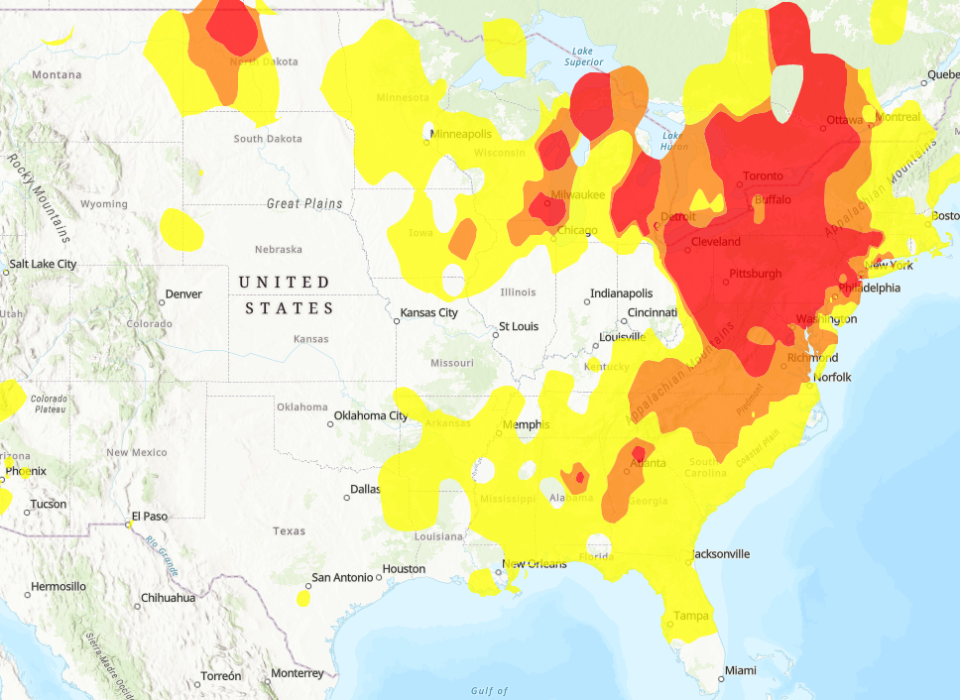
Cincinnati's Air Quality Index measured 52 on Friday morning, which is in the yellow range.
The EPA interactive map for air quality shows the Cincinnati region in the yellow category on Saturday too.
Code yellow air is considered "moderate." While this air quality is still regarded as "acceptable," some people may begin to experience health impacts, especially those who are sensitive to air pollution.
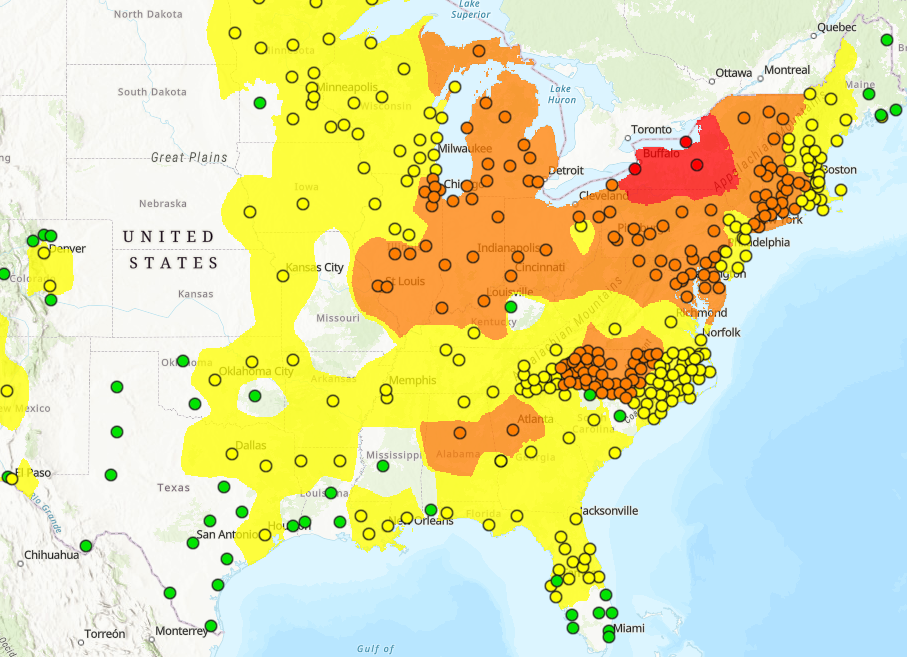
The air quality forecast for later in the day Friday shows the Cincinnati region in the orange or "unhealthy for sensitive groups" category. Sensitive groups include people with heart or lung disease, older adults, children, pregnant people, and those who spend a lot of time outdoors.
The science behind the smoky haze How is air quality measured? What are we inhaling?
The Ohio EPA canceled the statewide Air Quality Advisory on Friday, citing that smoke from Canadian wildfires is having less of an impact in the state.
According to a press release, particulate levels may remain elevated in isolated areas through the weekend. Some local air agencies and metropolitan planning organizations may continue to issue local advisories.
At the time of this story's publishing, the Southwest Ohio Air Quality alert remains in effect until 11:59 p.m. Friday.
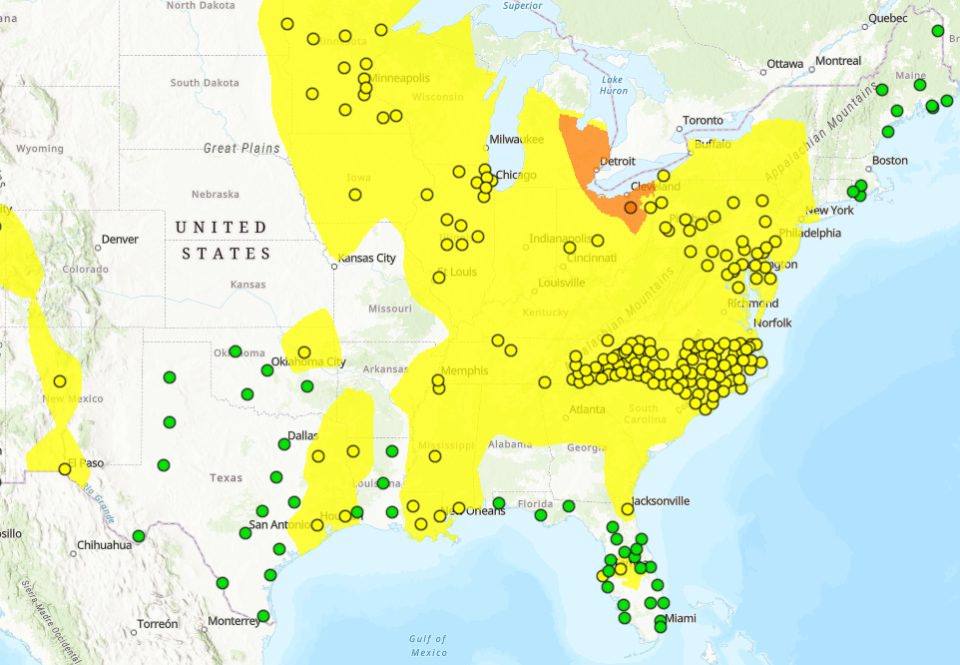
What to do during an air quality alert?
On Tuesday, the Ohio Department of Health advised Ohioans to limit their time outdoors, especially for sensitive groups. Here are other steps you can take, according to department director Dr. Bruce Vanderhoff:
Spend time in a room you can close off from outside air.
Avoid using candles, gas, propane, wood-burning stoves, fireplaces and aerosol sprays. Smoking tobacco products and vacuuming may worsen indoor air pollution.
If you have a central air conditioning system, use high efficiency filters to capture fine particles from smoke. If your system has a fresh air intake, set the system to recirculate mode or close the outdoor intake damper.
Stay hydrated by drinking plenty of water. If your eyes, nose or throat are irritated, running a humidifier may provide some relief.
When will wildfire smoke clear out of Cincinnati?
Joy Landry, Communication Specialist at the Southwest Ohio Air Quality Agency, told The Enquirer on Wednesday that it's difficult to predict precisely when the haze will lift because air pollution is weather dependent. She says the agency is taking it "one day at a time" regarding air quality conditions, but they still encourage people to stay indoors.
Showers and thunderstorms are expected to hit Greater Cincinnati this weekend, which may aid in cleansing the air, CBS reports.
Unfortunately, as the wildfires persist, smoky and hazy skies will continue to be a concern for Canadians and Americans until heavy rain falls where active forest fires occur, Environment and Climate Change Canada meteorologist Steven Flisfeder told CBS.
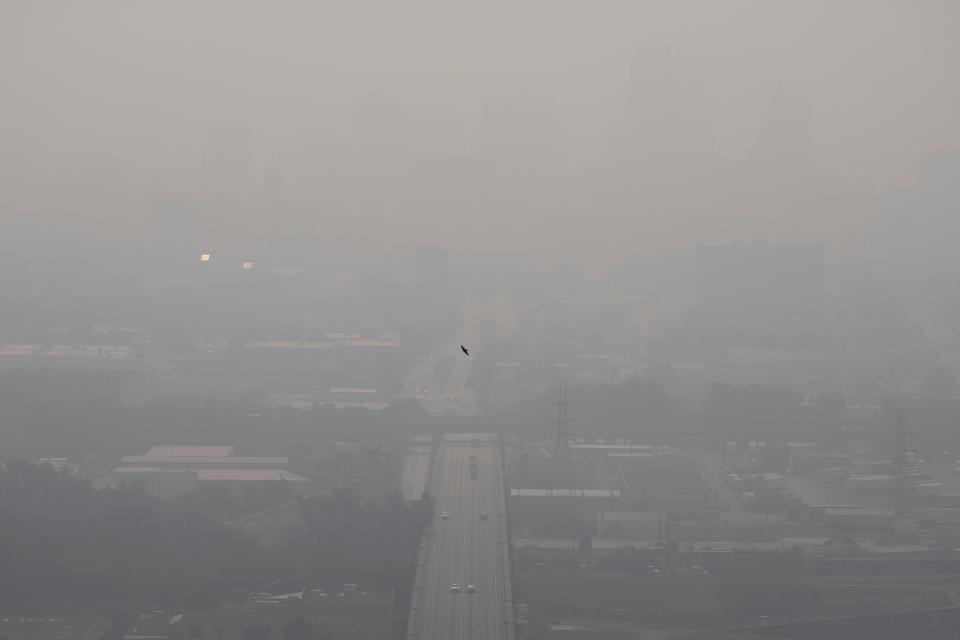
Should I wear a mask to the Taylor Swift concert in Cincinnati?
Cloth masks like the traditional COVID-19 masks aren't effective at stopping exposure to air pollutants, Landry says. A fitted N-95s may be a help, but Landry recommends consulting your health provider for specific guidance based on any existing medical problems.
More: Can face masks protect from wildfire smoke and smog?
Canada wildfires map
Canada's eastern provinces like Quebec, Ontario and Nova Scotia have been hit particularly hard this year by large and at times uncontrollable blazes.
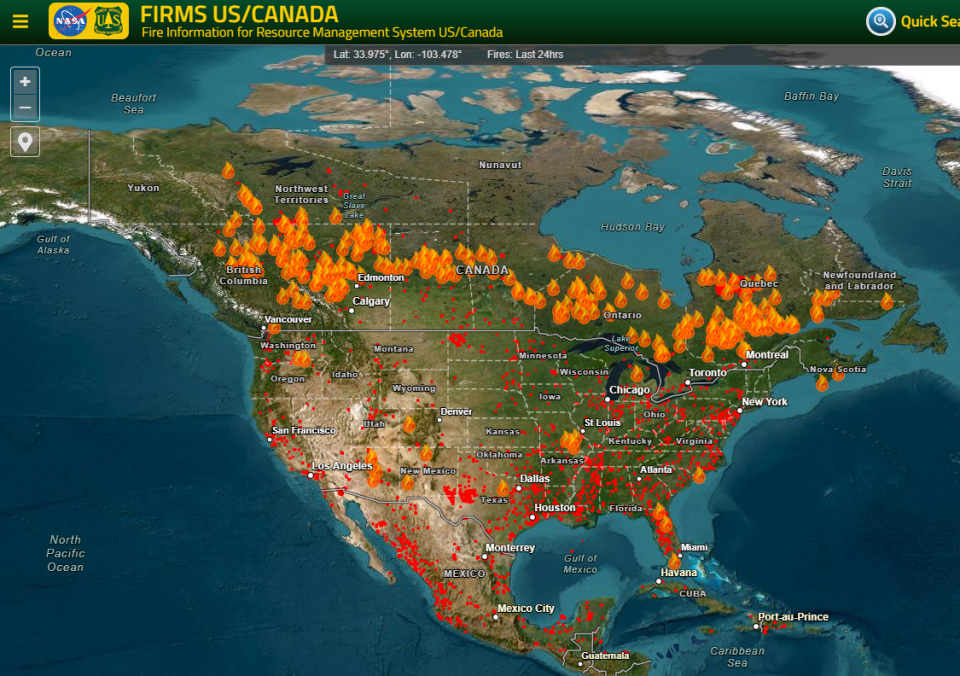
As of June 27, there are 480 active fires across the country, with 251 out of control and 152 under control, according to the Canadian Interagency Forest Fire Centre. Officials on Tuesday reported the highest number of active fires in Quebec. British Columbia, along Canada's west coast, had the second-highest number of active blazes followed by Alberta and Ontario.
The fires have scorched at least 7.8 million hectares — or around 19.2 million acres — of land across Canada since the start of this year, according to the fire agency. The acreage has surpassed the previous annual record from 1989, reported by the National Forest Database.
-Milwaukee Journal Sentinal
This article originally appeared on Cincinnati Enquirer: Air quality: Will smoke clear for Taylor Swift's shows?

